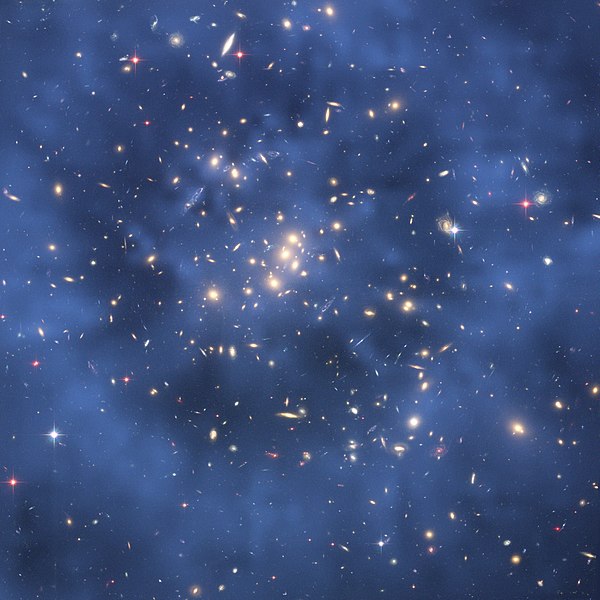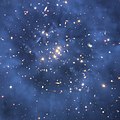Plik:CL0024+17.jpg
Wygląd

Rozmiar podglądu – 600 × 600 pikseli. Inne rozdzielczości: 240 × 240 pikseli | 480 × 480 pikseli | 768 × 768 pikseli | 1024 × 1024 pikseli | 2048 × 2048 pikseli | 3921 × 3921 pikseli.
Rozmiar pierwotny (3921 × 3921 pikseli, rozmiar pliku: 23,03 MB, typ MIME: image/jpeg)
Historia pliku
Kliknij na datę/czas, aby zobaczyć, jak plik wyglądał w tym czasie.
| Data i czas | Miniatura | Wymiary | Użytkownik | Opis | |
|---|---|---|---|---|---|
| aktualny | 15:33, 19 lip 2009 |  | 3921 × 3921 (23,03 MB) | Tryphon | Original size. |
| 03:36, 17 maj 2007 |  | 1280 × 1280 (1,75 MB) | Clh288~commonswiki | {{Information |Description=Astronomers using NASA's Hubble Space Telescope have discovered a ghostly ring of dark matter that formed long ago during a titanic collision between two massive galaxy clusters. The ring's discovery is among the strongest evide |
Lokalne wykorzystanie pliku
Następujące strony korzystają z tego pliku:
Globalne wykorzystanie pliku
Ten plik jest wykorzystywany także w innych projektach wiki:
- Wykorzystanie na af.wikipedia.org
- Wykorzystanie na ar.wikipedia.org
- Wykorzystanie na az.wikiquote.org
- Wykorzystanie na bcl.wikiquote.org
- Wykorzystanie na bn.wikipedia.org
- Wykorzystanie na bn.wikiquote.org
- Wykorzystanie na cs.wikipedia.org
- Wykorzystanie na cy.wikiquote.org
- Wykorzystanie na el.wikipedia.org
- Wykorzystanie na en.wikipedia.org
- Wykorzystanie na en.wikiquote.org
- Henry David Thoreau
- Leo Tolstoy
- Niels Bohr
- Karl Popper
- Arthur C. Clarke
- Friedrich Nietzsche
- Kate Bush
- Emily Brontë
- Ludwig Wittgenstein
- Helen Keller
- Joseph Addison
- Isaac Newton
- Jorge Luis Borges
- Edgar Allan Poe
- Fyodor Dostoyevsky
- Stephen Hawking
- Nikola Tesla
- Leaves of Grass
- Julian (emperor)
- Richard Feynman
- Four Quartets
- Eric Hoffer
- Jack Kerouac
- Aldous Huxley
- Aleister Crowley
- James Branch Cabell
- Denise Levertov
Pokaż listę globalnego wykorzystania tego pliku.



